Abstract
The Florida East Coast Railroad project was an ambitious initiative that focused on opening up major cities in Florida to the outside world. Sponsored by an American tycoon known as Henry Flagler, the railroad stretched from Jacksonville to Miami, finally extending to Key West. The construction was started in the late 1880s and through the support from the government and the local business society; it was finally completed in 1912. The railroad used locally available materials and heavily relied on stones. The technical human resource came from Europe and North America, while the laborers were from the local society.
Introduction
Florida East Coast Railroad is one of the earliest standard gauge railways that were meant to ease transport in this state. The construction of this railroad is credited to Henry Flagler, a tycoon who came to Florida as an investor. He realized that despite the beauty of the state, the infrastructure, especially the transport system, was in a poor state.
He saw this as an investment opportunity and started building grand hotels. After careful research of the transport system in this state, he realized that the biggest challenge in rail transport was that there existed disenfranchised railway systems operated by different entities. He realized that the only way of solving this problem would be to develop a standard gauge railway that would make interconnection possible.
He realized that by expanding the transport system, he would be opening up the city to visitors from other parts of the world. He would not only earn profits in the railway system but also expand opportunities for his real estate business. After collaborating with other entrepreneurs, Henry commissioned the construction of the railway in the late 1880s. By 1890, he had converted the line to a 1435 mm standard gauge, which was commissioned in 1892 (Bramson 51). The figure below shows the standard gauge railway line that he introduced to replace the old ineffective system.
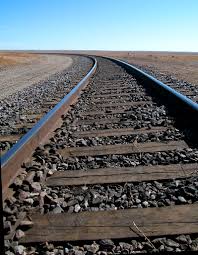
The initial line only stretched from St. Augustine to South Jacksonville as the construction was made complex because of the problem sourcing for the materials. The state and people within Florida supported the effort made by Henry and committed to supporting him in his effort to improve the infrastructure in this state. Through this support, he was able to extend the railroad 130 kilometers south to Miami along the Indian River. It progressed towards the south, reaching cities such as Titusville and New Smyrna.
By 1894, the railroad had stretched to West Palm Beach and extended to Biscayne Bay in 1896 because of the massive support that Henry received from the people in this state. The project remains one of the biggest privately sponsored railway projects in the country. The entire railroad system was commissioned on 21 January 1912 as an incorporated entity (Mulligan 28).
Cultural Factors
The late 1800s was the middle of the industrial revolution in the United States. Western civilization was taking shape as European from countries such as the United Kingdom, France, and Germany migrated to this country for various reasons. The infrastructure was expanding very rapidly as people settled in various parts of this country.
In Florida, large urban centers such as Tallahassee, Jacksonville, and Miami were expanding very fast. Given that many of the urban centers in Florida were coastal towns, the region started gaining popularity as a tourist destination. The Miami Beach and other tourists attraction centers were redefining the lifestyle in this city. When Henry Morrison Flagler first visited the city of Jacksonville, he was interested in expanding his real estate business empire.
He realized that the city had become a major tourists destination center, but the local investors were not doing enough to provide the visitors with the right facilities. He, therefore, considered investing in real estate by building magnificent hotels to serve both local and international tourists (Martin 49).
During this era, the development of infrastructure was in the hands of private investors. An investor was at liberty to develop a railroad and charge a fee for its users as a form of business. This explains why there were disenfranchised railroads with varying gauges making it difficult to have a direct connection from one part of the state to the other. The government, though very interested in taking part in the development of transport infrastructure, avoided direct participation for various reasons.
For instance, the local government in Miami offered incentives to Henry so that he could extend the railroad from Jacksonville to Miami. Private investors in this era were very powerful as we see Henry dictating everything in the rail construction. Technology was also gaining shape in this society very rapidly. The previous railroads that existed in this state were of poor quality because of limited levels of technology. However, Henry was a very rich and widely traveled investor who was able to access advanced technology.
That explains why he was the first investor to construct a standard gauge railway that connected most of the urban centers in this state. The figure below shows a rail bridge constructed across the ocean. It demonstrates how technology was advancing very fast in this stone era in construction.
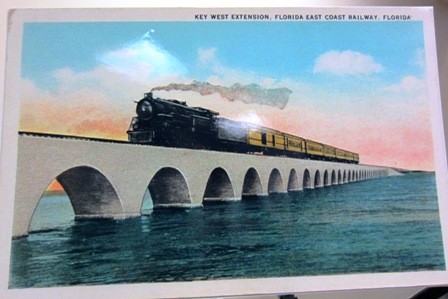
The bridge is made of stones, a technology that is no longer in practice in modern-day construction. However, the fact that they were able to construct it across the river, and that it was able to withstand the harsh forces of nature underwater demonstrates the architects and the engineers involved in the construction had advanced technological knowledge.
Construction of the Railway
The construction of the Florida East Coast Railroad was one of the mega projects in the late 1880s and early 1890s within the state of Florida. At first, Henry Flagler did not intend to make this a megaproject because his interest was in real estate. However, the government of Florida enacted a very generous land law, which offered a land grant of 8,000 acres to anyone who constructed a standard gauge railroad of one mile.
Being an astute businessperson, Henry could not ignore this opportunity of amassing tracks of land by constructing miles of standard gauge railroad within the state. The construction of the railway was taken in phases because of the great distance that had to be covered, and numerous natural challenges that were faced during the construction process (Martin 72).
The construction has begun in 1892 after Henry received approval and backing from the government. The construction started in Jacksonville as it moved southwards. The construction reached Fort Pierce in January 1894 and extended southwards, reaching West Palm Beach in March the same year. The Miami business fraternity and local government authorities made a concerted effort to attract Henry into this region. They offered him incentives so that he could extend the standard gauge railroad southwards to the city of Miami. The project to extend the railroad to Miami started in mid-1895.
By March 1896, the railroad had reached Fort Lauderdale, finally reaching Biscayne Bay in April the same year. In 1904, Flagler announced the construction of the railroad 128 miles to Key West, a venture that seemed impossible at that time given the limited levels of technology during this era. However, he was determined, and therefore, hired technocrats from Europe to guide the construction process.
The process was disrupted in 1906 when a strong hurricane struck the bridge while the workers were on board, killing 135 people. This stalled the project for a couple of years as it raised fundamental questions about the safety of the workers in this project. The figure below shows the spot where the project stalled following the accident (60).
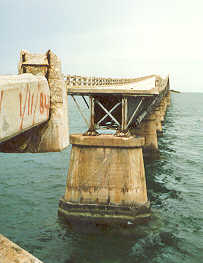
The construction of the rail bridge over the sea was finally completed in 1912 after years of struggling. Its cost was estimated to be $ 50 million, besides numerous lives of the workers who died at the site. Key West had become a strategic business hub, and the bridge was the link needed to make it possible for mainland traders to access this expanding town. This marked the end of the project that took close to 20 years and at massive cost and several lives lost. The figure below shows the path of the Florida East Coast Railroad from Jacksonville to Miami (Atwood and Weeks 119).
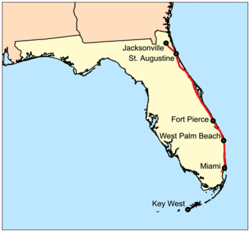
The materials used in the construction of this railroad were numerous. It is important to note that at this time, stones were still considered the best building materials when constructing roads, bridges, and even the foundation of the railroads. Stones of different sizes and shapes were needed to form the foundations of the railroad. The bridges were constructed using the stones as shown in figure 3 above. Ballast, cement, and sand were needed to construct the concrete, especially at the bridges.
Wooden sleepers were used in the construction because of their friendly cost and availability within the local market. The rail is made up of steel material that is shaped to assume the needed shape. The fasteners are used at the joineries together with screws and nuts to fix the rail tightly onto the frame. A base plate is needed to support the clips to support the rail anchors. The structure also requires railway iron inserts, casting shoulders, asphalt material, rail clamps, and a waterproof membrane.
Although the level of technology was not advanced in Florida at this time, most of these materials were available locally. However, the main problem that the contractor had to face is the cost of transportation and storage. Cases, where some of the materials were stolen from the stores, were very common, and this further increased the overall cost of construction (Bramson 92).
The method of construction was based on the technology available during The Renaissance. When the project started at Jacksonville, the process seemed simple, and the level of technology needed was not very complex. The focus of the designers was to ensure that this was a standard gauge railway. Laying the wooden slippers was simple because the land was generally flat as it moved southwards outside the town.
However, this changed when the construction went further down towards Miami where special bridges had to be built to reduce the distance to be covered. The rails were brought to the construction site from other locations miles away. Activities such as shaping the wooden slippers were not done at the site as a way of reducing the cost of storage and even transportation. They were prepared at the suppliers’ stores and brought when they were ready for use.
All the materials used in the construction of the railroad were standardized. The main activities at the construction site were the construction of the foundation fixing different components of the railroad to have a complete system. Most of the processes involved in laying the foundation were done manually because the current machines did not exist at this time. Human labor had to be used in digging, laying the foundation stones, mixing the ballast with cement, sand, and water to form the concrete.
Excavating the top cotton soil was important in ensuring that the railroad has a strong foundation. The excavation had to go deep enough to the solid rocks before laying the foundation stones and concrete. This was important in ensuring that the system can sustain great weight. Although Henry hired some of the best architects and engineers during this time, computer technology was not available in this era. It means that laying the rail had to rely on manual measurements other than guiding the process using a computer.
This took a long time, as the employees had to make measurements several times just to confirm that everything was working as per the expectations. The architects, surveyors, and engineers had to work very closely to ensure that there is no mistake in the interpretation of the measurements. When the unskilled and semi-skilled laborers were assigned any task, the technocrats, especially the engineers, had to supervise them to ensure that they followed the measurements given to them.
The construction became very complex in areas where the railroad required a bridge. Some of the currently used sophisticated equipment used in the construction of bridges did not exist at this time (Ayers 48). Most of the work such as lifting had to be done using simple tools, some of which were not very effective. The figure below shows a group of workers building a bridge over the sea towards Key West.
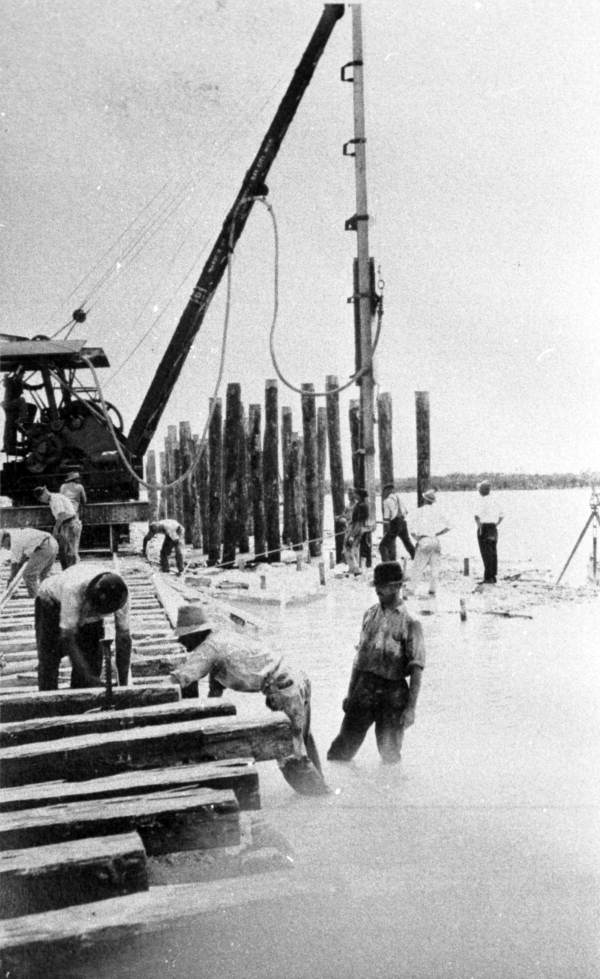
As can be seen in the figure above, the work was done manually in most of the cases, and it involved numerous risks. At times, the laborers had to spend some time in the water trying to lay the foundation. The construction of the bridge to Key West was the most expensive process. Sometimes the stones would be washed away by the raging storm in the sea. A hurricane once hit the workers while they were working on the high seas, resulting in the death of over 130 people.
As shown in the diagram above, the poor working conditions made it almost impossible for the workers to be rescued. The contractor did not put any precautionary measures to protect laborers, and this had serious consequences. Besides those who were killed in the high seas, other employees died by falling off cliffs along the railroad line.
Others were injured when falling objects landed on them, while a section sustained serious injuries from the instruments they were using in the construction process. The cranes used to lift the steel frames were prone to regular failure, and this reduced the efficiency of the entire process. On such occasions, employees would be forced to undertake those tasks manually, exposing them to various risks.
Tools and equipment used in the construction of the Florida East Coast Railroad were very basic. In the late 1890s, the United States was experiencing an industrial revolution. The northern territories of this country were more technologically advanced than the south. This means that the tools used were simple, cheap, and locally available.
Locomotives, wheel tracks, two-wheel dump carts, and wheelbarrows were very important in the transportation of materials from one location to the other. Quarry tools and blasting powder were needed in places where the railroad needed to pass over hills or through mountains. These materials were also vital in harvesting sand, rocks, and ballast used in the construction of the foundation for the railroad. Welding materials were needed at various stages in shaping the joineries, while the spanner helped in tightening the screws to ensure that the system was firmly fixed.
Although they were very ineffective, the cranes helped a lot when constructing the rail bridges. They helped in holding the steel frame in position, as they were tied using bolts. The technology was employed following the death of several workers at the high seas who were subjected to an inhuman working environment. The laborers had hand gloves to protect their hands from any harm when carrying the metallic or wooden materials used in the construction process.
The labor force that took part in the construction of the bridge came from various parts of the country based on their skills and talents. The skilled labor came from the northern part of the country. Henry was keen on developing a state-of-the-art standard gauge railroad that would meet the expectations of all the stakeholders.
He hired some of the best architects from Europe and parts of the United States to help in coming up with a design that would not only serve the purpose of aiding transportation but also be a beautiful site with unique shapes. He also needed highly skilled architects and surveyors, most of who were found within Florida.
He awarded these technocrats generously as a way of motivating them so that they could develop unique architectural designs. In most of the cases, they were allowed to stay in some of the magnificent hotels that Henry had constructed in Jacksonville. They would go to the field, take the measurements, and make sketches, but the actual design would take place in the comfort of these hotels (Ayers 56).
The semi-skilled labor came second in rank in the order of importance according to Henry. These were people with skills in carpentry, welding, or basic civil engineering. They were people who could interpret the instructions from the technocrats and apply them as required. Drivers and mechanics also fell in this category. They were very important in the construction process because they were the direct link between the technocrats and the junior employees.
After interpreting what should be done, they would issue an instruction to the junior employees about what they are expected to do. However, it is important to note that they did not enjoy the favors that the technocrats had. In fact, they rarely met Henry who was a great bureaucrat. He believed in following a specific channel when talking about official duties. This made it almost impossible for the mid-level employees to reach him.
The unskilled laborers formed the third class of employees. They were working at the site not because of any special skills, but because they have the physical capacity to undertake various tasks. They were the loaders, messengers, security officers, or any other duty that does not require any special skills. They work closely with the semiskilled workers who guided them on what to do. They would be assigned physically straining jobs or risky tasks that others were not willing to do.
Given the fact that they had no special skills or talents, they would be forced to undertake such assignments because of a lack of options. The figure below shows a group of junior employees taking a rest after a strenuous task.
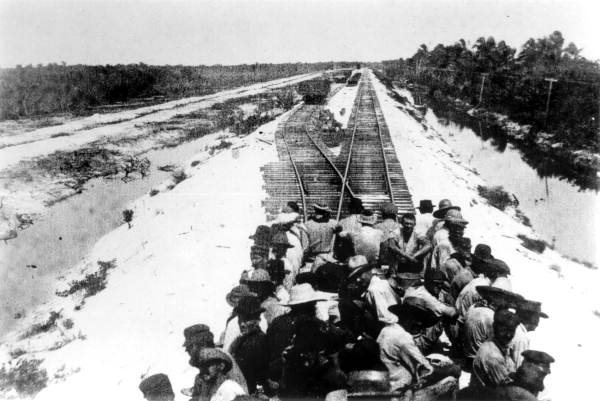
They worked under terrible conditions, and they were poorly remunerated. In most of the cases, they received their instruction from the semiskilled workers. Most of them were local jobless residents from rural settings.
If the Railway was built today
The Florida East Coast Railroad came at a time when it was needed the most in this state, especially by the business society. Henry was keen on ensuring that it met the expectation of all the stakeholders. The construction of the rail bridge across the sea was a venture that was seen as uniquely daring given the level of technology that was available at this time. However, if the railroad were to be built today, several changes would be necessary not only in its design but also in terms of the materials used in its construction. The figure below is an example of a modern-day railroad.
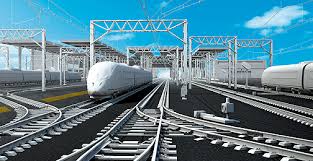
As shown in the above diagram, society currently demands more than just simple transport vessels that would facilitate their movement from one location to the other. They are looking for comfort, safety, and speed out of these vessels. Given the lavish spending habit Henry, he would probably build an electric railroad today.
The railroad would have different routes as the population keeps increasing in this state. Since Jacksonville and Miami are still the major cities in this state, many other towns have sprung up within the state that also needs effective means of transport. The railway lines would be going to different routes to ensure that the needs of these people are met.
In the 1890s, the current technology that is currently available was out of reach for the architects and engineers of this era. They could not use computer-guided machines to design or implement designs, and this limited their capacities. However, the current architects and engineers have some of the most sophisticated equipment designed to help in various stages when constructing a bridge. This means that the railway would assume a different design, probably to look like that in the figure above.
When constructing the railroad in the late 1890s Miami was a small urban center that was not known to many Americans or international tourists as an attractive holiday destination. Today, this is not the case. Miami has become one of the most attractive tourists destination centers in the world attracting both local and international tourists. If the railroad were to be constructed today, the designers would want to give tourists something unique out of this railway.
For instance, it would be designed in a way that will allow the visitors to view the city while they are on a train. The designers may consider constructing a footbridge above the bridge within the city to allow tourists to see how the train maneuvers its way into and out of the city. Technology is advancing, and I believe that soon, there will be railroads, which act as sources of electric sources of power for trains. The Florida East Coast Railroad would have probably used this technology.
Another change that would be witnessed is the materials used in the construction, especially at the bridge. Instead of using stones to put up the bridge, the architects would consider using special steel frames that can withstand water better than the stones. The rail bridge would also be slightly higher to reduce cases of an accident in case of cyclone strikes.
Works Cited
Atwood, Mary, and William Weeks. Historic Homes of Florida’s First Coast. New York: Cengage, 2014. Print.
Ayers, Wayne. Florida’s Grand Hotels from the Gilded Age. Charleston: Arcadia, 2005. Print.
Bramson, Seth. Florida East Coast Railway. Charleston: Arcadia Publishers, 2006. Print.
Martin, Walter. Florida’s Flagler. Athens: University of Georgia, 2010. Print.
Mulligan, Michael. Railroad Depots of Central Florida. Charleston: Arcadia Publishers, 2008. Print.
Rajtar, Steve. A Guide to Historic St. Augustine Florida. Charleston: History Press, 2007. Print.
Turner, Gregg. Florida Railroads in the 1920s. Charleston: Arcadia, 2006. Print.